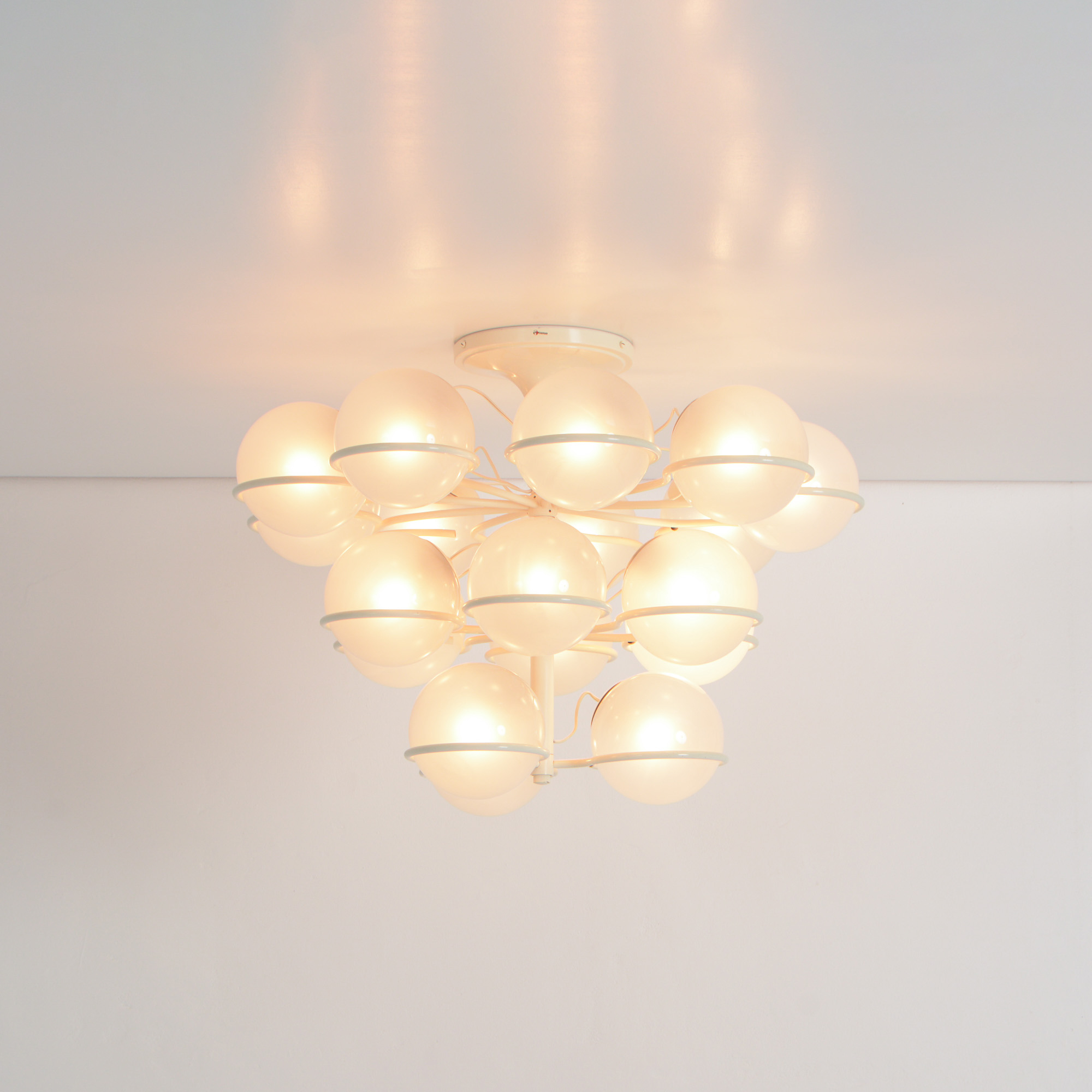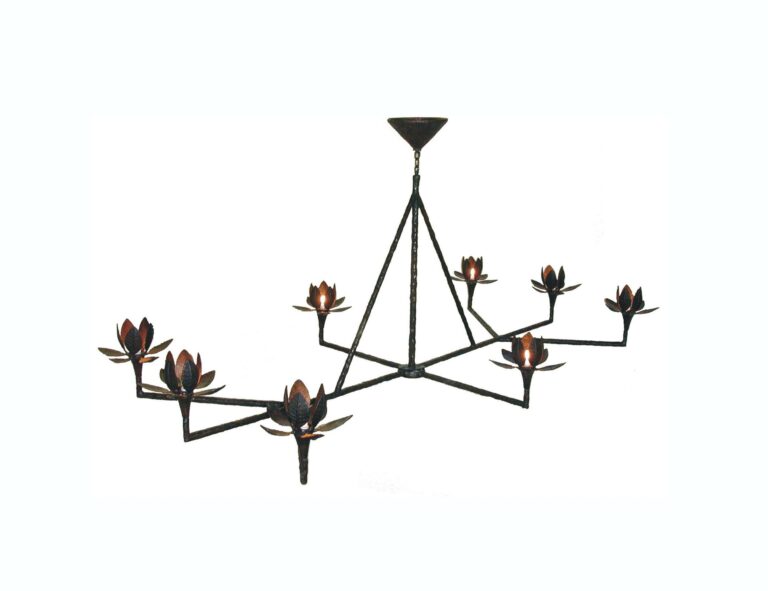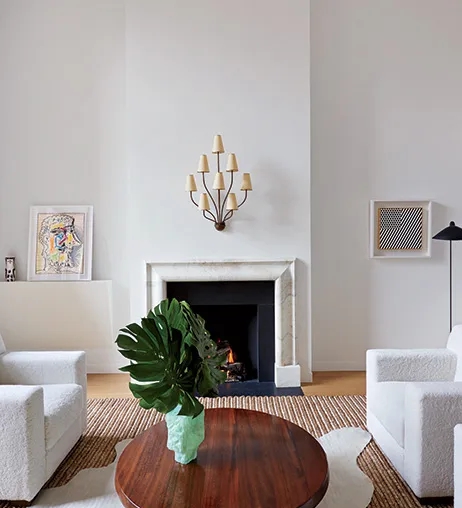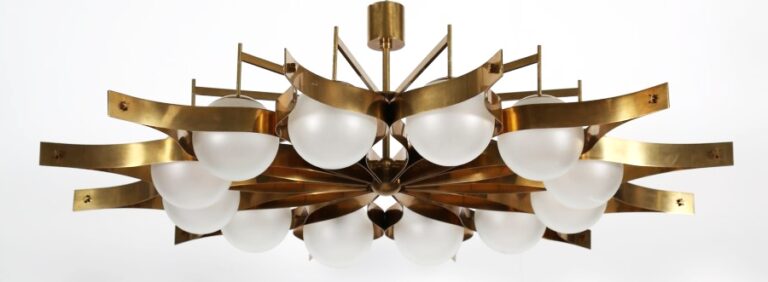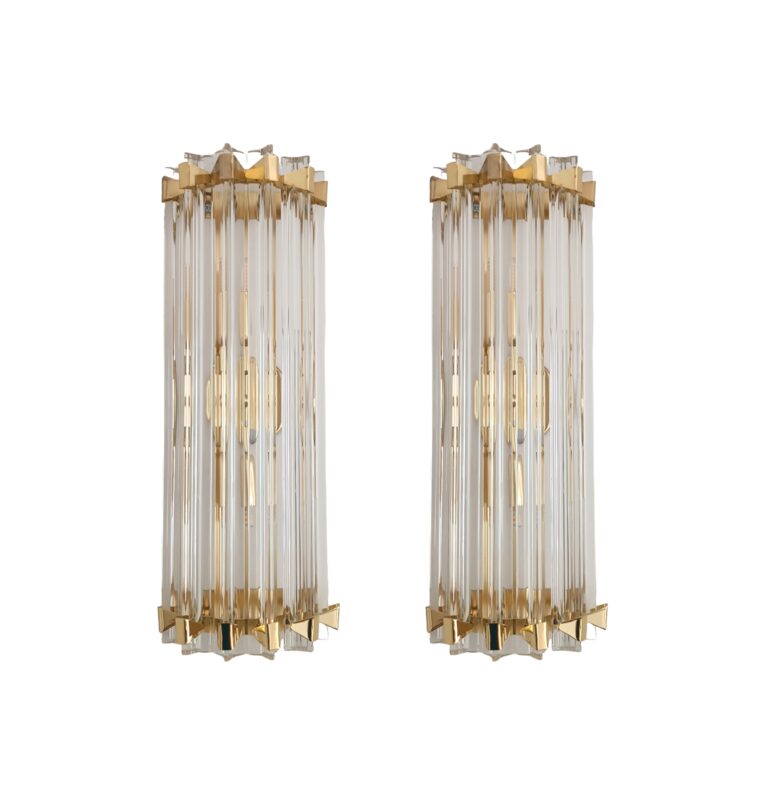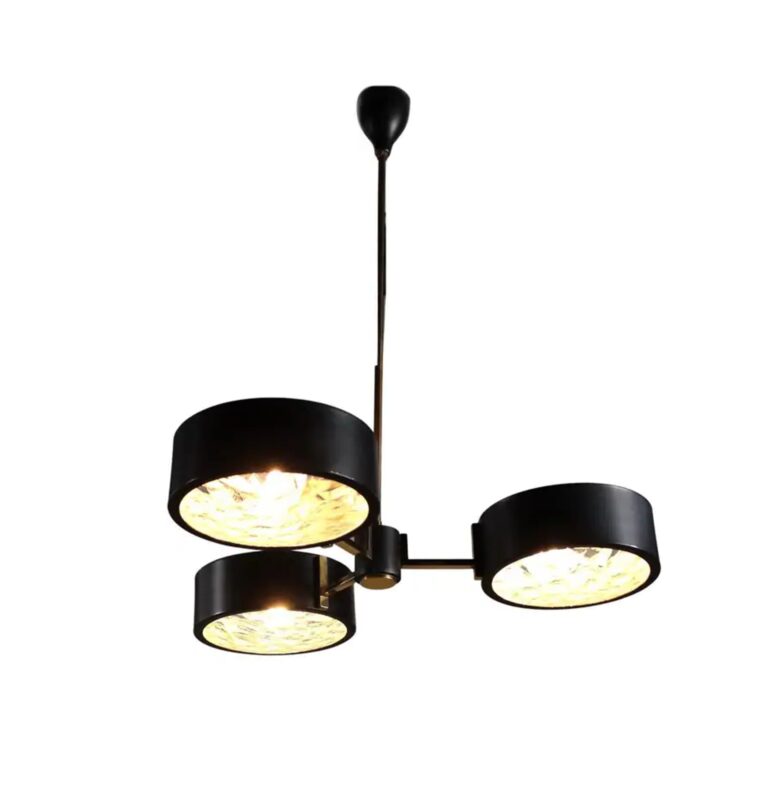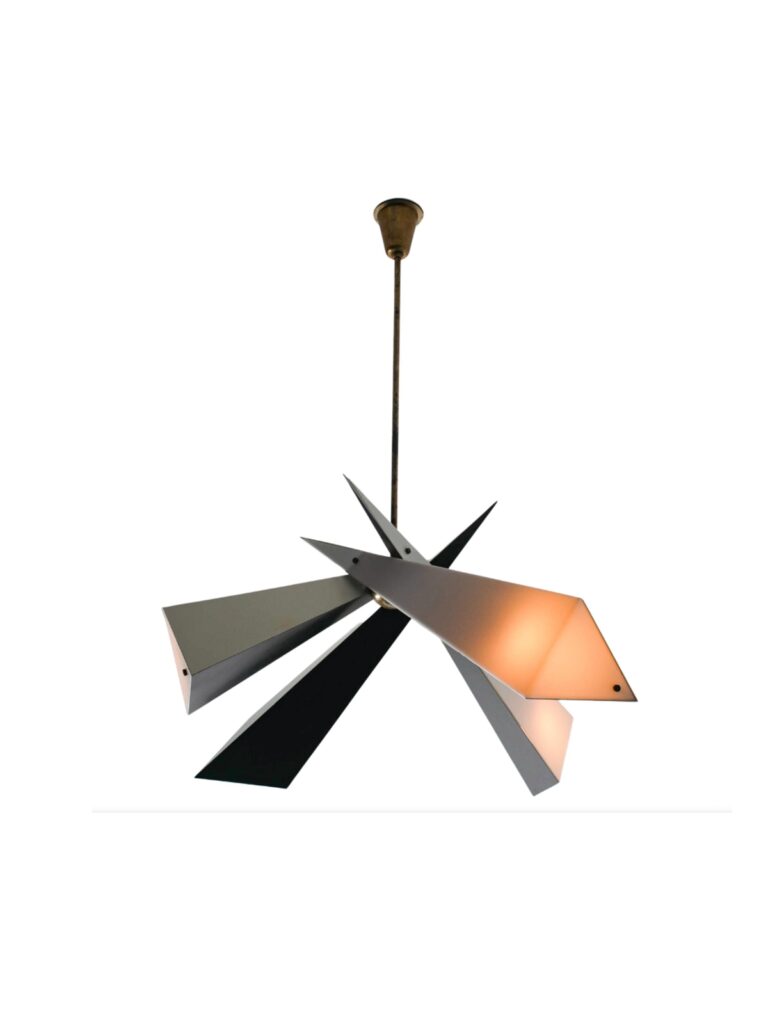Metal Magic: Gino Sarfatti Lighting and the Mid-Century Revolution
Gino Sarfatti’s innovative designs for Arteluce, especially the 2042 chandelier, revolutionized mid-century modern lighting with their unique use of metal tube structures. His creations seamlessly blend functionality with sculptural artistry, incorporating luxurious materials like brass and Murano glass. Sarfatti’s approach not only defined mid-century aesthetics but also introduced a timeless elegance that continues to influence contemporary interior design. His lighting fixtures, characterized by clean lines and sophisticated materials, remain a staple in high-end, luxury interiors, offering both practical illumination and artistic focal points. Explore how his legacy continues to inspire modern designers, merging classic mid-century elements with contemporary sophistication.
Introduction
Gino Sarfatti, a visionary Italian designer, left an indelible mark on mid-century modern design, particularly through his innovative use of metal tube structures. His work for Arteluce, especially the iconic 2042 chandelier model, showcases his unique approach to lighting design. This article explores Sarfatti’s influence on mid-century interior design, highlighting his use of metal tubes, brass, and sculptural elements, and how these components continue to define high-end, luxury lighting today.
The Genius of Gino Sarfatti
Gino Sarfatti founded Arteluce in 1939, revolutionizing the lighting industry with his avant-garde designs. His creations were characterized by a meticulous attention to detail, innovative use of materials, and a deep understanding of lighting’s functional and aesthetic roles in interior design.
- Innovative Use of Metal Tubes:
- Structural Elegance: Sarfatti’s use of metal tubes was groundbreaking. He employed these structures not just as functional supports but as integral aesthetic components, creating a sense of lightness and modernity. The 2042 chandelier, with its intricate arrangement of metal tubes, exemplifies this approach, offering both structural integrity and visual appeal.
- Versatility and Modernity: The metal tubes allowed for versatile designs that could adapt to various interior settings. This flexibility was a key aspect of mid-century modern design, which valued both form and function.
- The 2042 Chandelier Model:
- Design Excellence: The 2042 chandelier is a quintessential example of Sarfatti’s design philosophy. Its elegant metal tubes, arranged in a complex yet harmonious structure, create a striking visual impact while providing excellent illumination. This chandelier is not just a light source but a sculptural masterpiece that enhances any interior space.
- Material Innovation: Sarfatti’s use of materials like brass and polished metal added a luxurious touch to his designs. The combination of these materials with the metal tube structures created pieces that were both durable and aesthetically pleasing.
Mid-Century Modern and Sarfatti’s Influence
Mid-century modern design is defined by its simplicity, functionality, and integration of natural and industrial materials. Sarfatti’s work perfectly embodies these principles, making his designs timeless classics.
- Aesthetic and Functional Integration:
- Lighting as Art: Sarfatti’s designs blurred the line between functionality and art. His chandeliers and wall sconces were not just practical lighting solutions but also served as focal points in a room’s décor. This duality is a hallmark of mid-century modern design.
- Sculptural Forms: The sculptural quality of Sarfatti’s metal tube structures added a dynamic element to interiors. These forms were not only visually striking but also created interesting plays of light and shadow, enhancing the overall ambiance of a space.
- Luxury and High-End Appeal:
- Brass and Murano Glass: While Sarfatti is known for his use of metal tubes, he also incorporated luxurious materials like brass and Murano glass into his designs. These elements added a touch of opulence, making his lighting fixtures highly sought after in high-end interior design.
- Timeless Elegance: The timeless appeal of Sarfatti’s designs lies in their elegant simplicity and innovative use of materials. His work continues to be celebrated in modern interior design for its ability to elevate the aesthetic and functional quality of spaces.
Applying Sarfatti’s Concepts in Contemporary Design
- Incorporating Metal Tube Structures:
- Modern Interpretations: Designers today can draw inspiration from Sarfatti’s use of metal tubes to create modern lighting fixtures that blend structural integrity with artistic elegance. These designs can add a contemporary touch while paying homage to mid-century aesthetics.
- Functional Art: Emphasizing the sculptural aspect of lighting, modern designs can incorporate metal tube structures to create pieces that serve as both functional light sources and works of art.
- Using Luxurious Materials:
- Brass and Murano Glass: Incorporating brass and Murano glass in contemporary lighting designs can add a luxurious element, enhancing the sophistication of modern interiors. These materials can be used in various forms, from chandeliers to wall sconces, to create a cohesive and elegant lighting scheme.
- High-End Appeal: By combining these luxurious materials with modern design principles, interior designers can create spaces that are both timeless and contemporary, reflecting the enduring influence of Sarfatti’s work.
Conclusion
Gino Sarfatti’s innovative use of metal tubes and his integration of luxurious materials like brass and Murano glass have left a lasting legacy in mid-century modern design. His creations, particularly the 2042 chandelier model for Arteluce, exemplify the perfect blend of form, function, and artistic elegance. For interior designers seeking to infuse their projects with high-end, sculptural lighting, Sarfatti’s work remains an unparalleled source of inspiration. By embracing his design principles, contemporary interiors can achieve a timeless luxury that continues to captivate and inspire.
